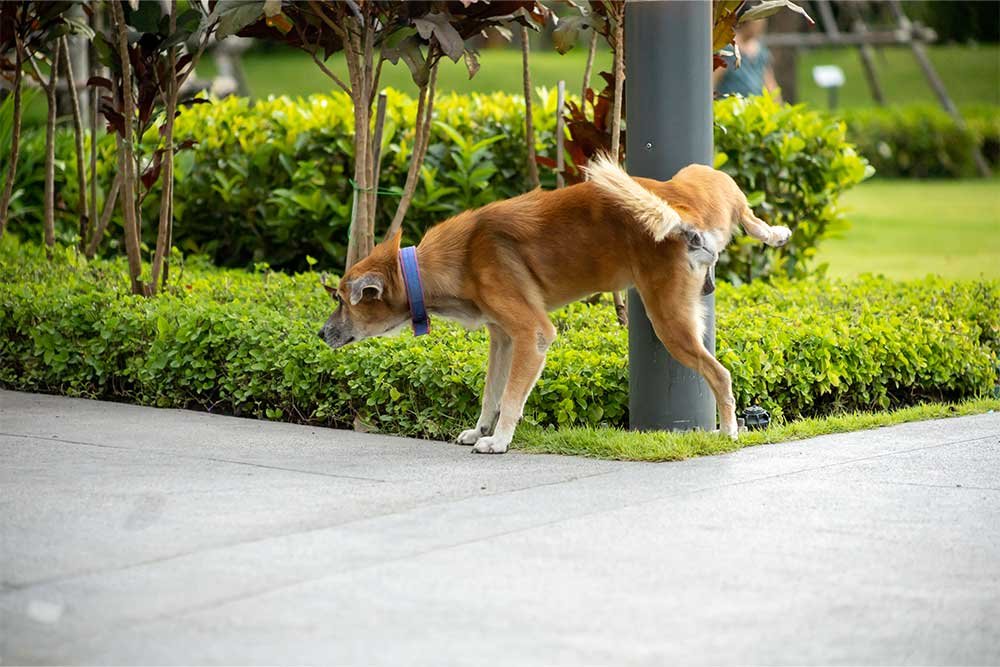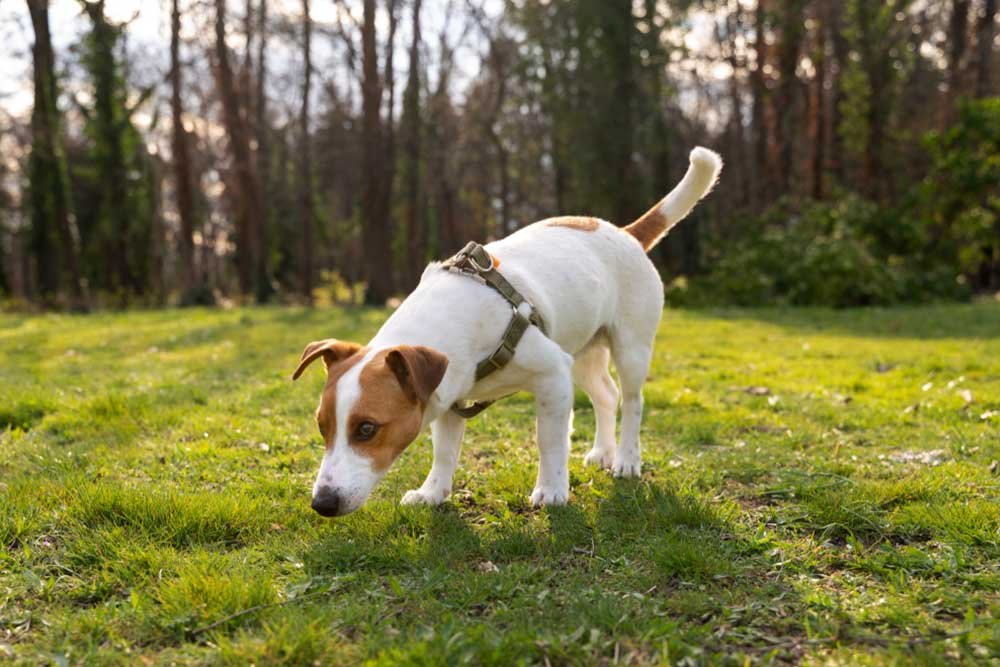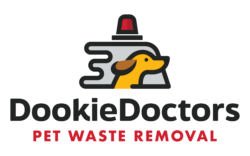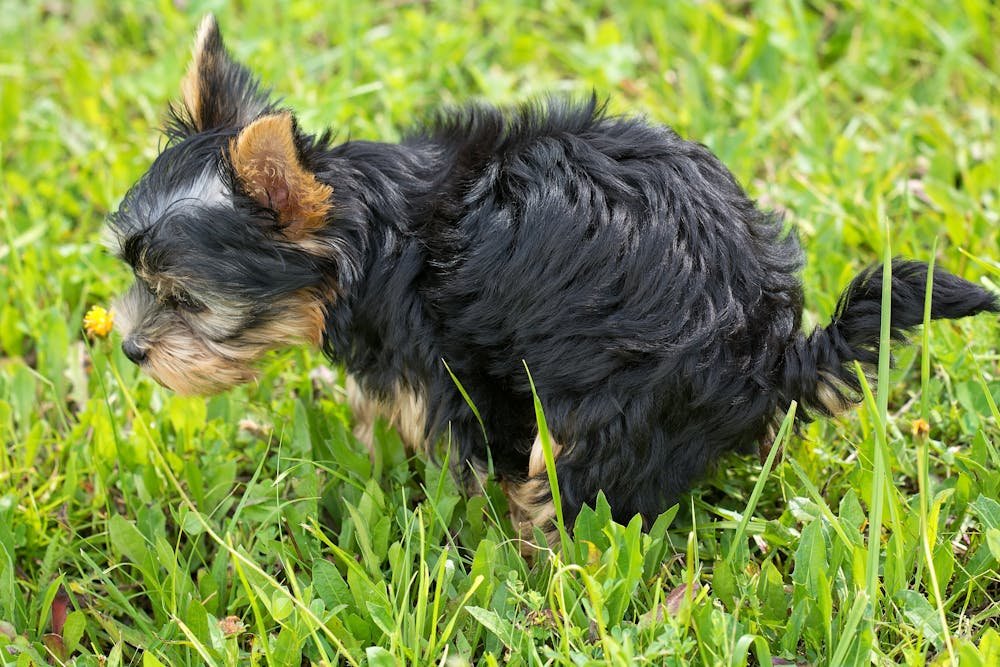Brown spots can turn a healthy yard into a polka-dotted patchwork. Dog owners see them most often after dry spells or a stretch of busy days. The pattern tends to be the same: a tan center surrounded by a darker green ring. That ring is the giveaway. It points to nitrogen as the driver, not disease.
What actually burns the grass
Dog urine contains urea, a nitrogen-rich compound. In small doses, nitrogen feeds turf. In concentrated doses, it dehydrates and kills leaf tissue. The green ring forms where the liquid thins out at the edge and acts like a fertilizer. The dead center marks the spot where salts and nitrogen overwhelmed the blades.
Moisture changes the outcome. On a well-watered lawn, urine dilutes and damage drops. During heat or drought, concentration rises and burn marks spread. Grass species matter too. Tall fescue tolerates higher nitrogen than Kentucky bluegrass. Short mowing, compacted soil, and thin thatch also increase stress, so the same urine creates a larger scar.

What about poop
Feces rarely scorch grass overnight, but it still harms turf. A pile blocks light and air, which weakens the blades beneath. As it breaks down, it releases nitrogen and salts into a tight spot. That localized surge can burn or invite weeds. Prompt removal limits both sanitation risks and turf stress. If time is tight, consistent help from dog poop cleaning services keeps nitrogen loads down before they build up.
Common myths to skip
- It is not about a dog’s sex. Female dogs often squat and release in one place, so the damage looks worse. The chemistry is the same.
- Changing urine pH rarely fixes burn. The core issue is total nitrogen and concentration, not acidity alone.
- Be cautious with supplements that claim to “neutralize” urine. Some products alter mineral balance or add salt. Speak with your veterinarian first.
Prevention that actually works
Water fast. If you see a fresh spot, rinse it within a few minutes. A watering can works. So does a hose set to a gentle stream. Quick dilution reduces injury more than any additive.
Set a potty zone. Pick a small area with gravel, mulch, or hardy turf. Walk your dog there on leash for a week or two and reward success. A defined routine reduces random hot spots across the yard. If you prefer outside help, a reliable dog poop service can keep that zone clean and usable.
Raise mower height. Taller grass builds deeper roots and better resilience. Aim for 3 to 3.5 inches on cool-season lawns.
Aerate and topdress. Looser soil drains and spreads nutrients more evenly. Fall is a good window for core aeration and a thin layer of compost.
Hydration helps. Well-hydrated dogs often produce more diluted urine. Add a second water bowl outdoors and refresh it often. Do not push extreme water intake; keep it sensible.
Scoop consistently. Routine pick-up prevents smothering and later nitrogen pulses. If busy weeks pile up, a scheduled dog poop pickup service keeps the lawn on track.

Quick reference: urine vs feces
| Source | What causes injury | How fast it shows | Best immediate step |
| Urine | High nitrogen and salts in a tight spot | Often within 24–72 hours | Flush with water right away |
| Feces | Smothering plus later nitrogen release | Days to weeks | Remove promptly; lightly rinse area |
| Compounding factors | Heat, drought, short mowing, compaction | Makes burns larger and slower to heal | Water deeply; raise mowing height; aerate |
If you are searching for a pooper scooper near me, look for providers that offer flexible schedules and clear service areas, since consistency matters as much as technique.
Repairing damaged spots
Start by raking out dead material. Flush the soil to move salts below the root zone. If the soil crusts or sheds water, scratch the surface lightly and add a thin layer of compost. Reseed with a durable blend; tall fescue mixes do well in many Mid-Atlantic and Great Lakes climates. Keep the seed consistently moist until germination. For small scars, a pre-mixed patch repair kit speeds setup. Keep foot and paw traffic off new seedlings for a few weeks, then resume normal mowing once blades reach mowing height.
Large or repeat burns signal underlying stress. Run a soil test to check organic matter and nutrient balance. Where dogs always go in the same corridor, consider edging that run with stepping stones, artificial turf made for pets, or a deeper gravel bed.
If you need regular help and want a local option, searching dog poop removal near me can surface crews that work your neighborhood and understand seasonal turf swings.
Health and hygiene side notes
Regular pick-up protects more than grass. It reduces pathogens that can move into runoff after storms, lowers fly pressure, and keeps odors in check. Bag waste per local rules and store it away from drains. Do not compost pet waste with food scraps. Commercial digesters or municipal guidance vary by city, so follow local instructions.
Putting it all together
A lawn can handle dogs and still look good. Focus on dilution, routine, and turf strength. Flush fresh spots. Guide your dog to a small, hardy zone. Keep mowing height moderate and soil open. Maintain a steady scoop schedule, whether you do it yourself or use a trusted provider. If you live in Allegheny County and need help, dog poop removal Pittsburgh services offer both one-time cleanups and recurring plans that fit a busy week. Brown spots do not have to be a permanent feature. With quick water, smart training, and steady care, most marks fade and the grass fills in. When time gets tight, hiring dog poop clean up professionals can keep the routine steady while you focus on the rest of your day.

